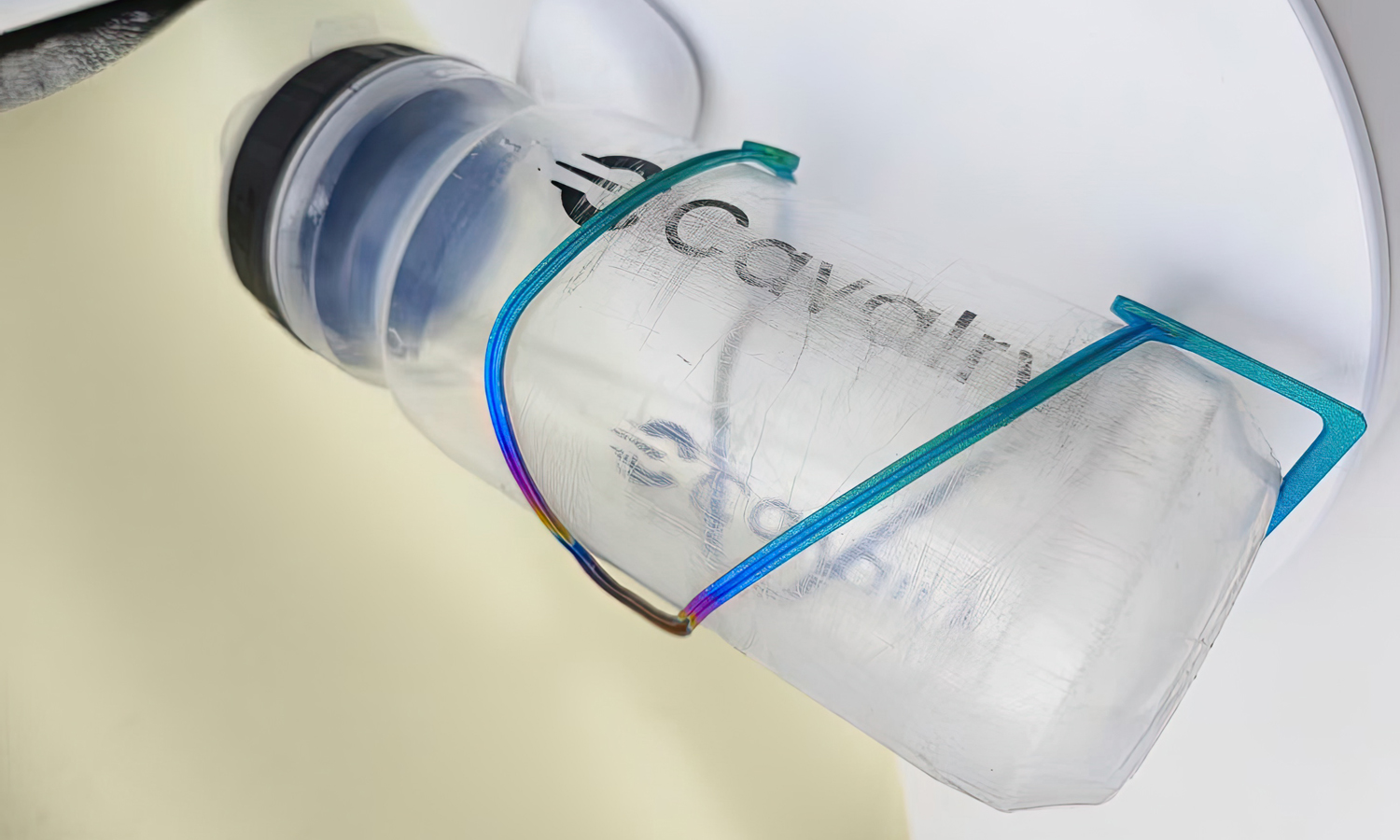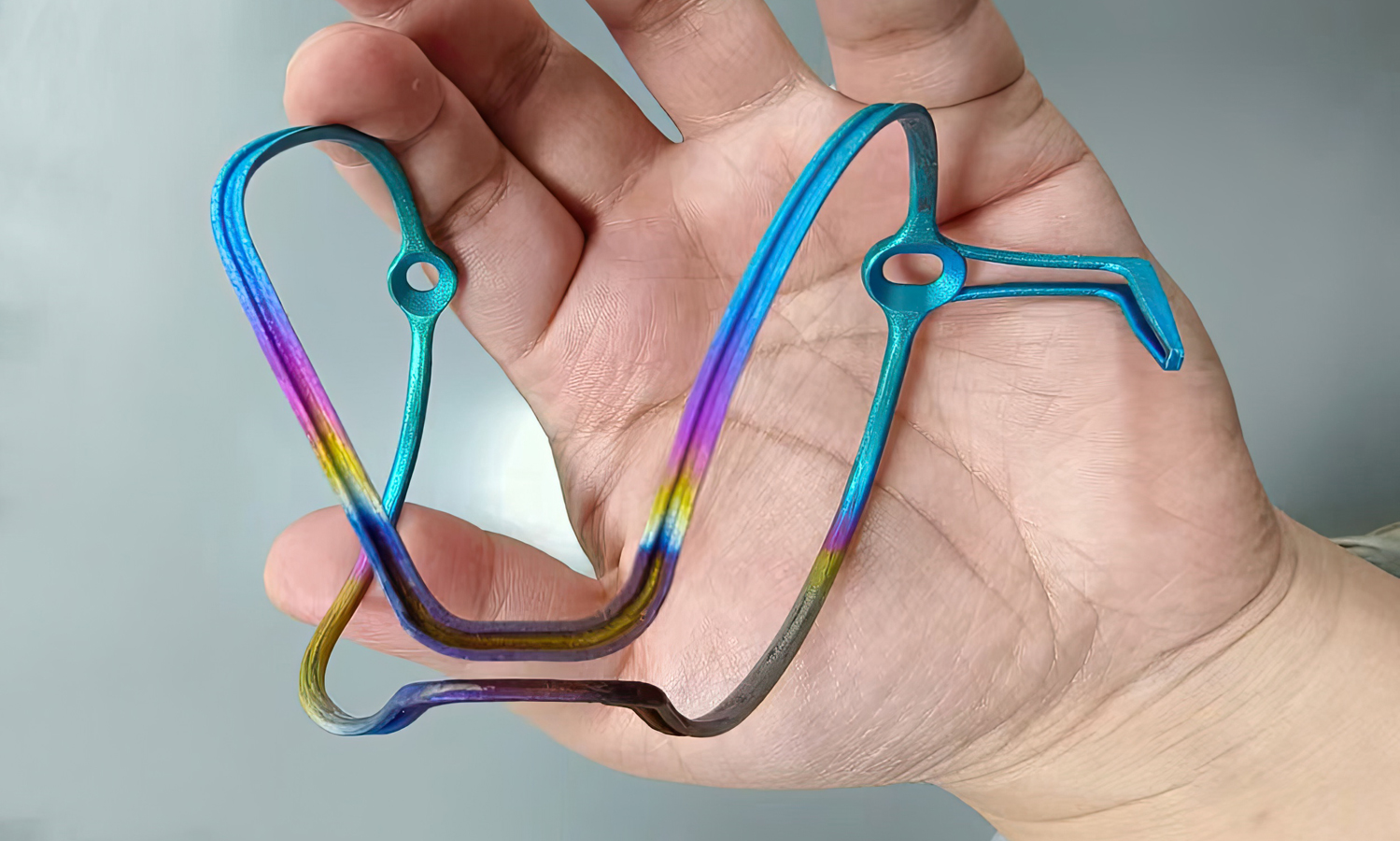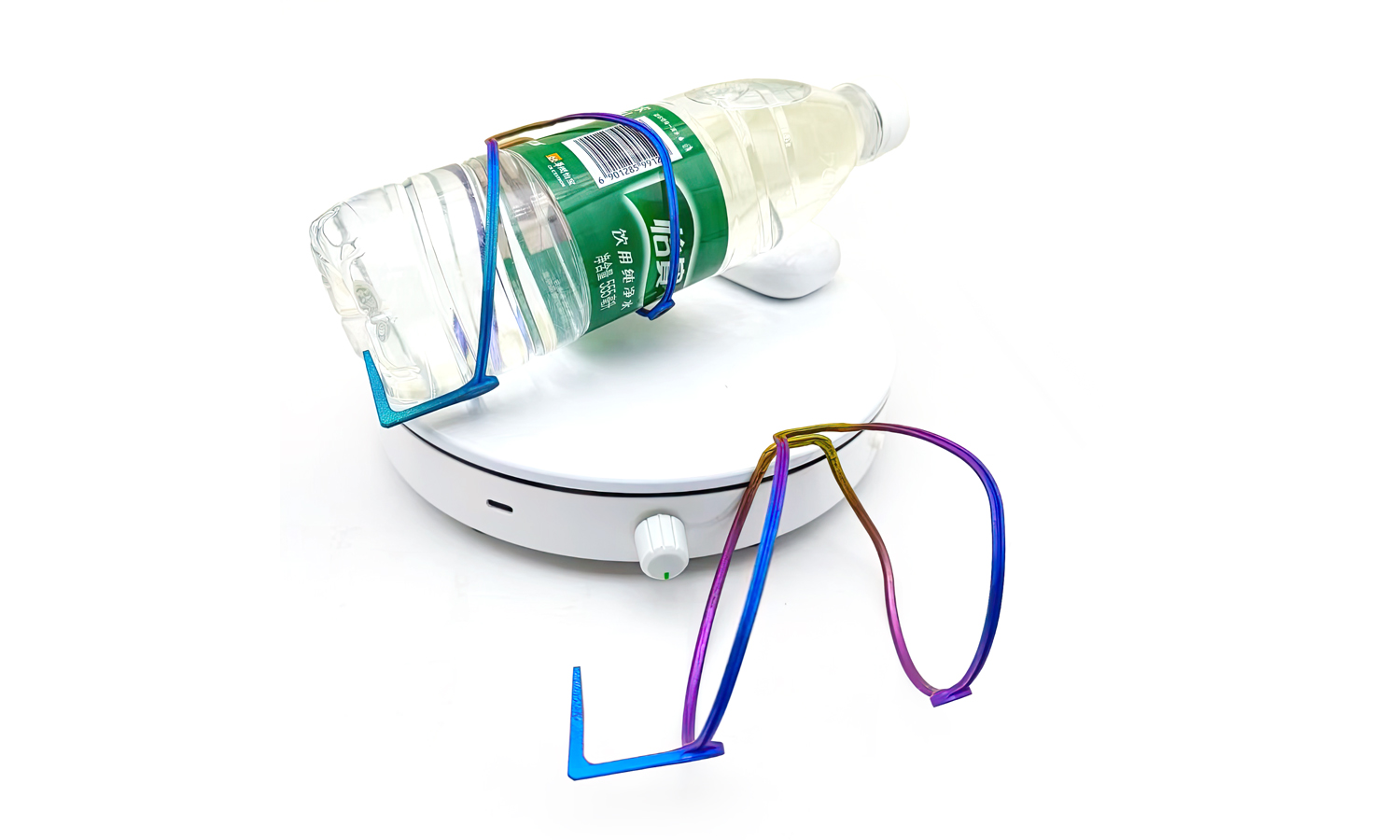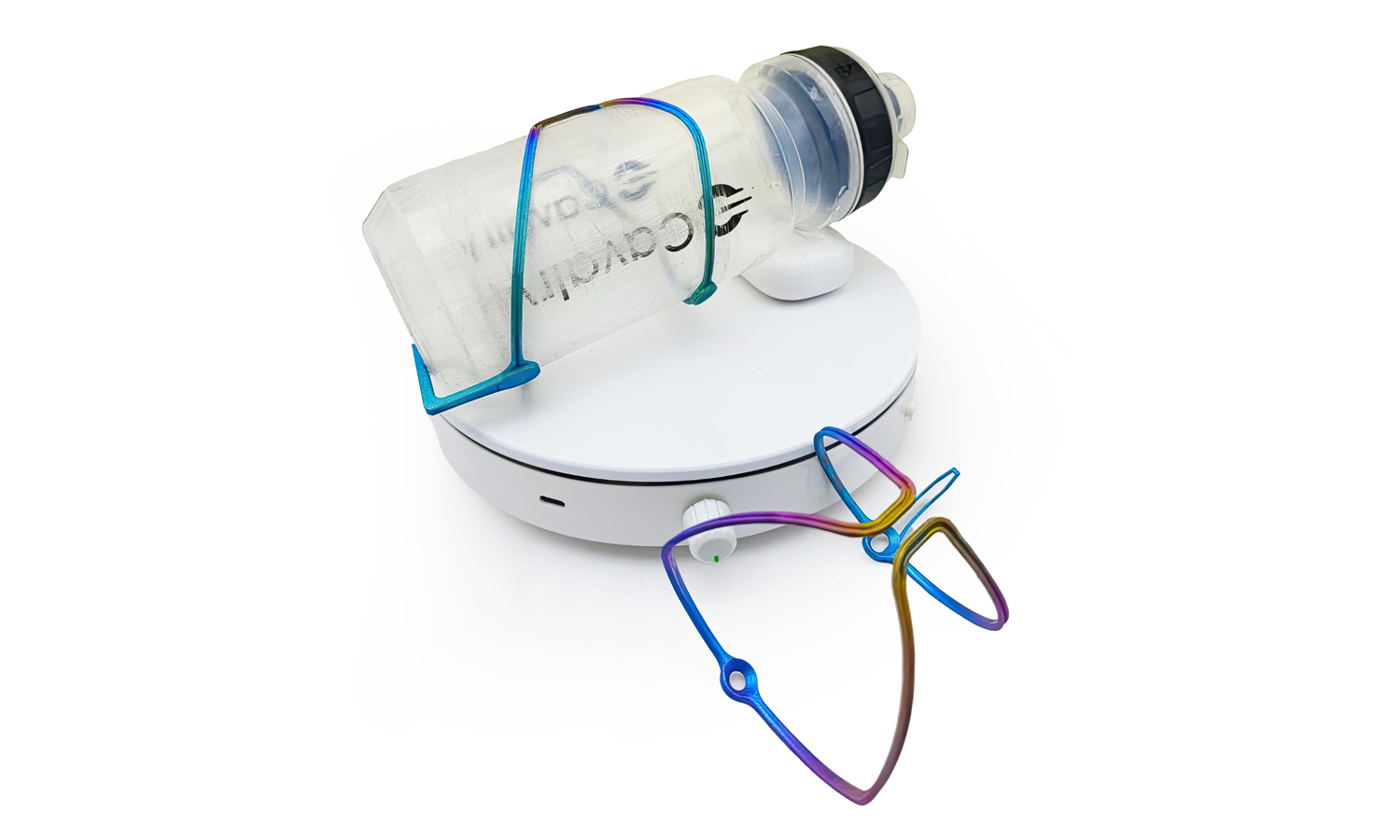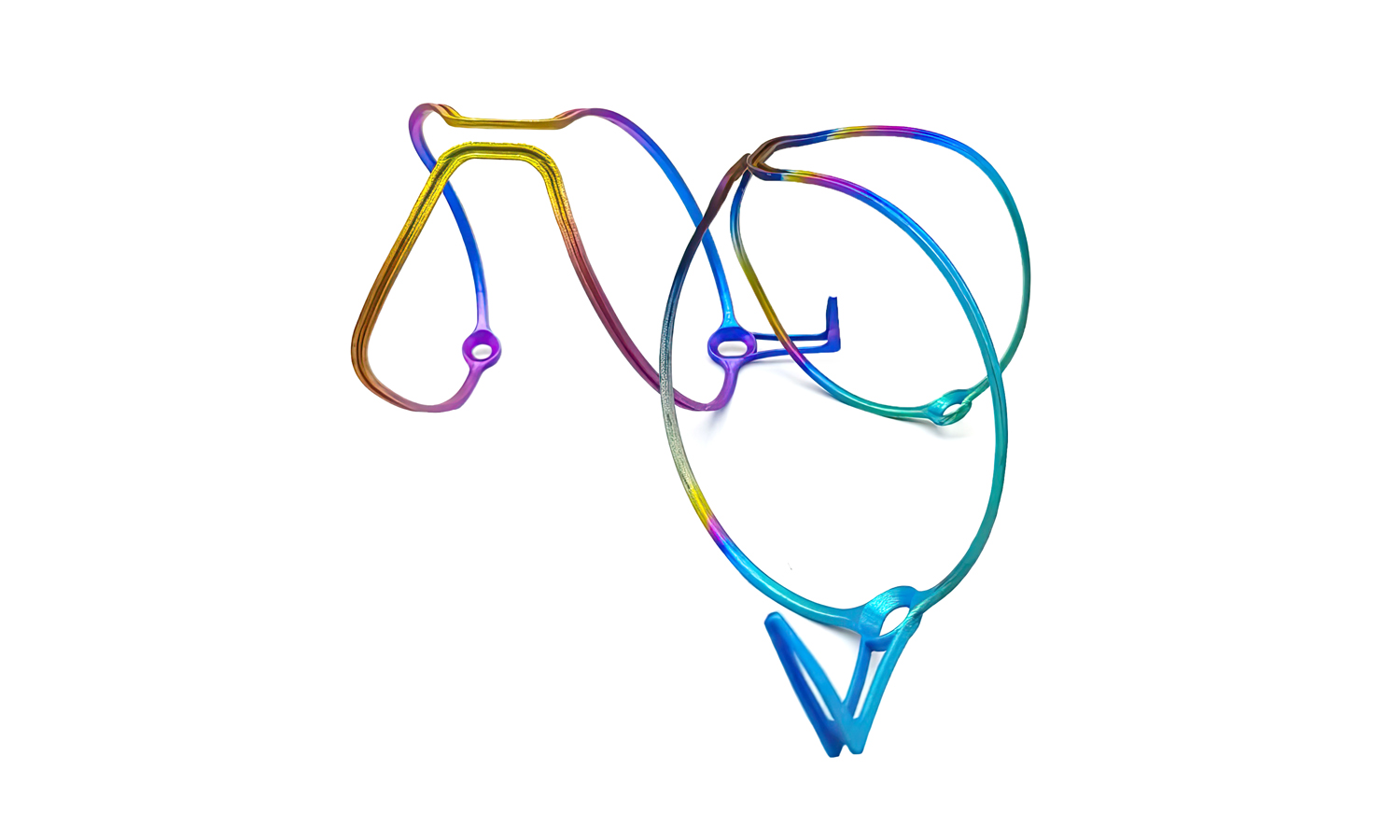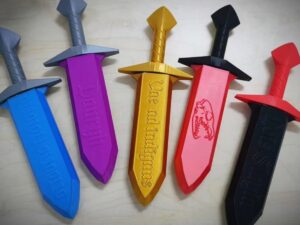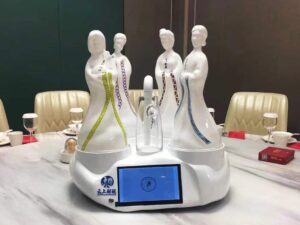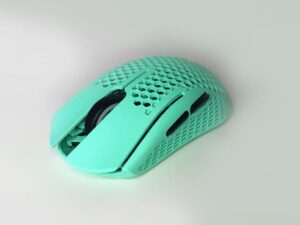- SLA 3D Printed Puzzle Wheel Toy Resin Prototype
- LCD 3D Printed Buddhist Deity Avalokiteshvara Fine-Detail Resin Statue
Gallery
About Project
Looking for a way to add some serious bling to your bike? Look no further than this eye-catching DMLS 3D-printed anodized rainbow titanium bike bottle cage!
This sleek and minimalist cage features a stunning iridescent finish, showcasing a captivating interplay of blues, purples, and golds. More than just good looks, this cage securely cradles your plastic water bottle, keeping it firmly in place during even the bumpiest rides. The bottle sits horizontally, with the cage providing ample support.
The secret behind the mesmerizing colors lies in the anodization process. By heating the titanium with a torch or fire gun, a thin oxide layer forms on the surface. The temperature used determines the thickness of this layer, which in turn dictates the resulting color. As the heat increases, the titanium goes through a fascinating transformation, transitioning through golds, purples, blues, and a spectrum of shades in between.
At FacFox, we were thrilled to print a half dozen of these bottle cages for the designer. 3D printing is perfectly suited for small-batch production runs and creating complex metal shapes, making it ideal for innovative bike components like this one.
FacFox offers a wide range of 3D printing services specifically tailored to the bike industry. From lightweight handlebars and custom frames to unique, eye-catching accessories like this rainbow titanium bottle cage, our expertise and cutting-edge technology can help bring your cycling visions to life. Let FacFox help you elevate your bike's form and function ŌĆō contact us today!
Solution
- Step 1: Design and Preparation.
The sleek, minimalist design of the bike bottle cage was created by the designer using CAD software.
The digital model was then prepared for 3D printing by converting it into a format compatible with the DMLS (Direct Metal Laser Sintering) machine. - Step 2: 3D Printing.
The titanium powder was loaded into the DMLS machine.The machine’s laser selectively fused the titanium powder layer by layer, according to the digital model, until the entire bike bottle cage was formed.
This additive manufacturing process allowed for the creation of the complex shapes required for the design. - Step 3: Post-Processing.
Once the 3D printing was completed, the printed bottle cages were removed from the build platform.
The excess titanium powder was cleaned off, and the structures were subjected to initial inspection. - Step 4: Laser Cutting.
Any necessary fine adjustments and detailed features were refined using laser cutting to ensure precision in the final shape. - Step 5: Polishing.
The surfaces of the bottle cages were then polished to remove any rough edges and achieve a smooth finish.
This polishing process also prepared the titanium surface for the subsequent heating process. - Step 6: Heat Anodization.
The polished titanium bottle cages were heated with a torch or fire gun.
By carefully controlling the temperature, an oxide layer was created on the surface of the titanium.
The temperature variation determined the thickness of the oxide layer and the resulting colors, ranging from gold to purple, blue, and various iridescent shades in between. - Step 7: Final Inspection and Quality Control.
Each anodized bike bottle cage was inspected to ensure the desired color effect was achieved and that the structural integrity was maintained.
The cages were then tested for their ability to securely cradle and hold a plastic water bottle in place during rides. - Step 8: Batch Production.
A half dozen of these titanium bottle cages were produced for the designer, taking advantage of 3D printing’s suitability for small-batch production and the ability to manufacture complex shapes efficiently.
